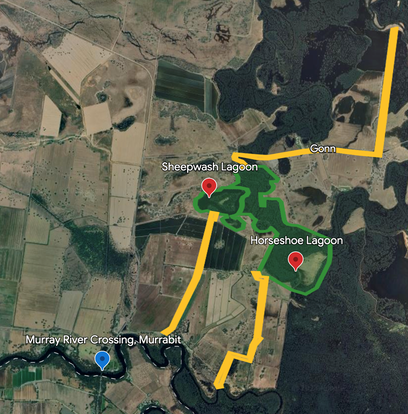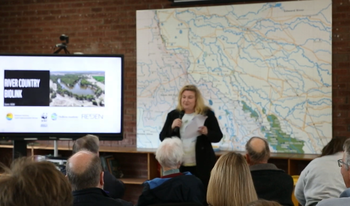The River Country Biolink Guide
The River Country Biolink Guide is designed to inspire both discussion and action towards regeneration of the Murray River inland delta.
WMLIG’s The River Country Biolink project, supported by WWF-Australia, bought together farmers, environmental market experts, ecologists, landscape rehydration experts, and traditional owners to co-design a plan for an environmental product - a hydrated biolink - that complements food and fibre growing and maximises the potential of our region’s man-made and natural capital assets to achieve a premium.
The biolink project was created to be a ‘living business case’ and blueprint for accessing biodiversity and carbon markets.
The River Country Biolink Guide consists of two parts - an outline of the co-design process and recommendations plus a comprehensive conceptual design report for landscape rehydration of the biolink's Sheep Wash Lagoon and Horseshoe Lagoon by the Mulloon Insitute.
The complete guide and the two reports can be downloaded here.
WMLIG’s The River Country Biolink project, supported by WWF-Australia, bought together farmers, environmental market experts, ecologists, landscape rehydration experts, and traditional owners to co-design a plan for an environmental product - a hydrated biolink - that complements food and fibre growing and maximises the potential of our region’s man-made and natural capital assets to achieve a premium.
The biolink project was created to be a ‘living business case’ and blueprint for accessing biodiversity and carbon markets.
The River Country Biolink Guide consists of two parts - an outline of the co-design process and recommendations plus a comprehensive conceptual design report for landscape rehydration of the biolink's Sheep Wash Lagoon and Horseshoe Lagoon by the Mulloon Insitute.
The complete guide and the two reports can be downloaded here.
|
|
The River Country Biolink project is a response to the emergence of markets in carbon sequestration and biodiversity restoration (nature repair) coupled with global changes in supply chains accounting for impacts on the climate and the natural world herald an enormous shift in business rules.
Farmers, as land stewards of 55% of the Australian land mass and primary producers at the top of the value chain, are inextricably tied to the challenges and opportunities the changing market dynamics will present. Farming communities in the Murray River inland delta, have already experienced market failure of a natural resource and are determined to ensure the design of emerging environmental markets and accompanying supply chain pressures do not present both perverse incentives and the same rapid transfer of wealth and water from their region and others. The River Country Biolink co-design project, a work in progress, is an invitation to think deeply and take action on seeking sustainable ways to resource and be rewarded by whole-of-landscape regeneration as it complements sustainable food and fibre growing. |




